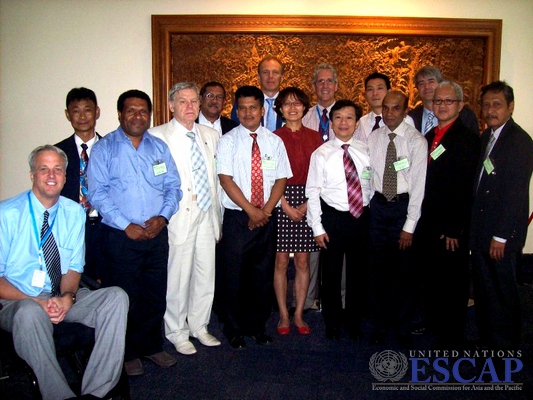The Establishment of an ANTAM moves ahead at May 2012 meeting in Bangkok, Thailand

UNAPCAEM held its latest joint Technical Working Group (TWG) and Steering Committee (SC) Meeting on the establishment of an Asia-Pacific network for testing agricultural machinery (“ANTAM”) on 15-16 May 2012 in Bangkok, Thailand. The meeting, based on inputs from the previous TWG held in Bali, Indonesia in October 2011, shared the following “Priority Focus Areas and Responsibility Country Assignments” as follows:
· Agricultural Tractors (all sizes/types 2 – 4 wheel) – China, India, Russia;
· Paddy Threshers – Sri Lanka, Philippines, Bangladesh, Viet Nam, Myanmar;
· Knapsack Sprayers – Sri Lanka, Viet Nam;
· Mechanical/Combine harvesters – Malaysia, Russia, India;
· Post harvest Machinery, Milling and Dryers etc. – Indonesia, Philippines;
· Hand tools – Nepal
Two countries, Bangladesh and India, were unable to attend but submitted their reports. Papua New Guinea was the only country in attendance that was not able to prepare a report due to having new participant representation at this meeting.
The meeting found that over USD 2.0 billion has been spent globally to improve agricultural mechanization while at the same time, an astonishing USD 3 billion was spent as a social cost of injures and damages related to the operation of agricultural machinery. Such numbers reflect the urgency for establishing an ANTAM. The best way forward for the establishment of such a network may come from The Organisation for Economic Co-operation and Development (OECD) and the European Network for the Testing of Agricultural Machinery (ENTAM) that have a well established international testing activity according to international procedures.
It is these established international procedures that can serve as a template for an ANTAM, where a piece of agricultural machinery could, for example, be submitted for testing at an accredited testing station (testing application); receive testing with a report generated of the test (perform test and issue report); gain acceptance of the test and recognized by the accreditation body and national authority; and then submitted to APCAEM for acknowledgement, publication, added to regional and local statistics and finally archived. Such an example of following international accepted procedures is the best way to have a clear system noting duties and responsibilities. To fund the testing process in the Asia-Pacific region, manufacturers should pay for the tests and Governments should give subsidies to tested machines equaling cost benefit optimization.
It was proposed at the next meeting for the establishment of an ANTAM that the Steering Committee develop the procedures based on the example stated above together with country members and national authorities and have the TWG members elaborate the methodologies for testing according to the priorities laid out by all participating countries of the proposed network.
